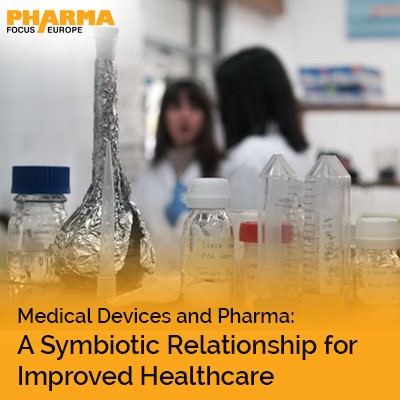
The symbiotic relationship between medical devices and pharmaceuticals revolutionizes healthcare by enhancing diagnostics, treatment, and disease management. This integration fosters personalized medicine, improved drug delivery systems, and patient empowerment. As technology advances, this collaboration will drive further innovations, optimizing patient outcomes and transforming global health care.

The healthcare industry is continually evolving, driven by technological advancements and innovative approaches to patient care. Among the most significant developments is the symbiotic relationship between medical devices and pharmaceuticals. This relationship has transformed the way diseases are diagnosed, treated, and managed, leading to improved healthcare outcomes. Understanding this dynamic interaction is crucial for appreciating the future of healthcare.
Medical devices encompass a wide range of instruments, apparatuses, implants, and machines used in medical procedures. These devices are pivotal in diagnosing, monitoring, and treating various health conditions. Some common examples include:
Pharmaceuticals, on the other hand, involve the development, production, and marketing of drugs used to prevent, treat, and manage diseases. Medications can be broadly categorized into:
The integration of medical devices and pharmaceuticals has led to significant advancements in healthcare. This symbiotic relationship is evident in several key areas:
1. Personalized Medicine
Personalized medicine involves tailoring medical treatment to the individual characteristics of each patient. Medical devices, such as genetic testing kits and wearable health monitors, provide detailed data about a patient's health status. This information allows healthcare providers to prescribe medications that are more effective and have fewer side effects. For instance, pharmacogenomic testing can determine how a patient will respond to specific drugs, leading to more personalized and effective treatments.
2. Improved Drug Delivery Systems
Innovative drug delivery systems have been developed through the collaboration of medical device and pharmaceutical companies. These systems ensure that medications are delivered to the right place at the right time, improving efficacy and reducing side effects. Examples include:
3. Enhanced Diagnostic Capabilities
The combination of medical devices and pharmaceuticals has revolutionized diagnostics. Imaging agents and contrast media used in MRI, CT, and PET scans improve the clarity and accuracy of images, aiding in the early detection of diseases. Diagnostic devices can identify specific biomarkers, enabling early diagnosis and prompt treatment. For example, point-of-care testing devices can rapidly detect infections, allowing for timely administration of antibiotics.
4. Chronic Disease Management
Chronic diseases, such as diabetes, heart disease, and respiratory conditions, require ongoing management. The collaboration between medical devices and pharmaceuticals has led to the development of comprehensive management solutions. For instance:
Another critical aspect of the symbiotic relationship between medical devices and pharmaceuticals is patient empowerment. With the advent of wearable health devices and mobile health applications, patients can actively participate in their healthcare. These devices can monitor vital signs, track medication adherence, and provide reminders for taking medications. For example, smart pill dispensers ensure that patients take the correct dosage at the right time, reducing the risk of medication errors and improving adherence.
These tools also facilitate better communication between patients and healthcare providers. Data from wearable devices can be shared with doctors in real-time, allowing for more informed decision-making and timely interventions. This continuous feedback loop fosters a proactive approach to healthcare, enabling early detection of potential health issues and adjustments to treatment plans.
Regulatory bodies like the FDA and EMA play a crucial role in ensuring the safety and efficacy of medical devices and pharmaceuticals. These agencies are increasingly recognizing the importance of harmonizing regulations to facilitate the development and approval of combination products. Collaborative efforts between medical device manufacturers and pharmaceutical companies are essential for navigating the regulatory landscape and bringing innovative products to market.
Joint ventures and partnerships are becoming more common, leveraging each other's expertise to develop cutting-edge solutions. For instance, pharmaceutical companies may partner with tech firms to create advanced drug delivery systems, while medical device manufacturers collaborate with biotech companies to develop diagnostic tools that complement therapeutic treatments.
The future of healthcare lies in the continued integration of medical devices and pharmaceuticals. Emerging technologies, such as artificial intelligence (AI), machine learning (ML), and the Internet of Medical Things (IoMT), will further enhance this relationship. Some future prospects include:
The convergence of medical devices and pharmaceuticals is driving a new era of healthcare innovation. This synergistic relationship enhances patient care, optimizes treatment outcomes, and empowers patients to take control of their health. As technology continues to evolve, the collaboration between these two sectors will become even more integral to advancing medical science and improving global health outcomes. Understanding and embracing this relationship is key to unlocking the full potential of modern healthcare.